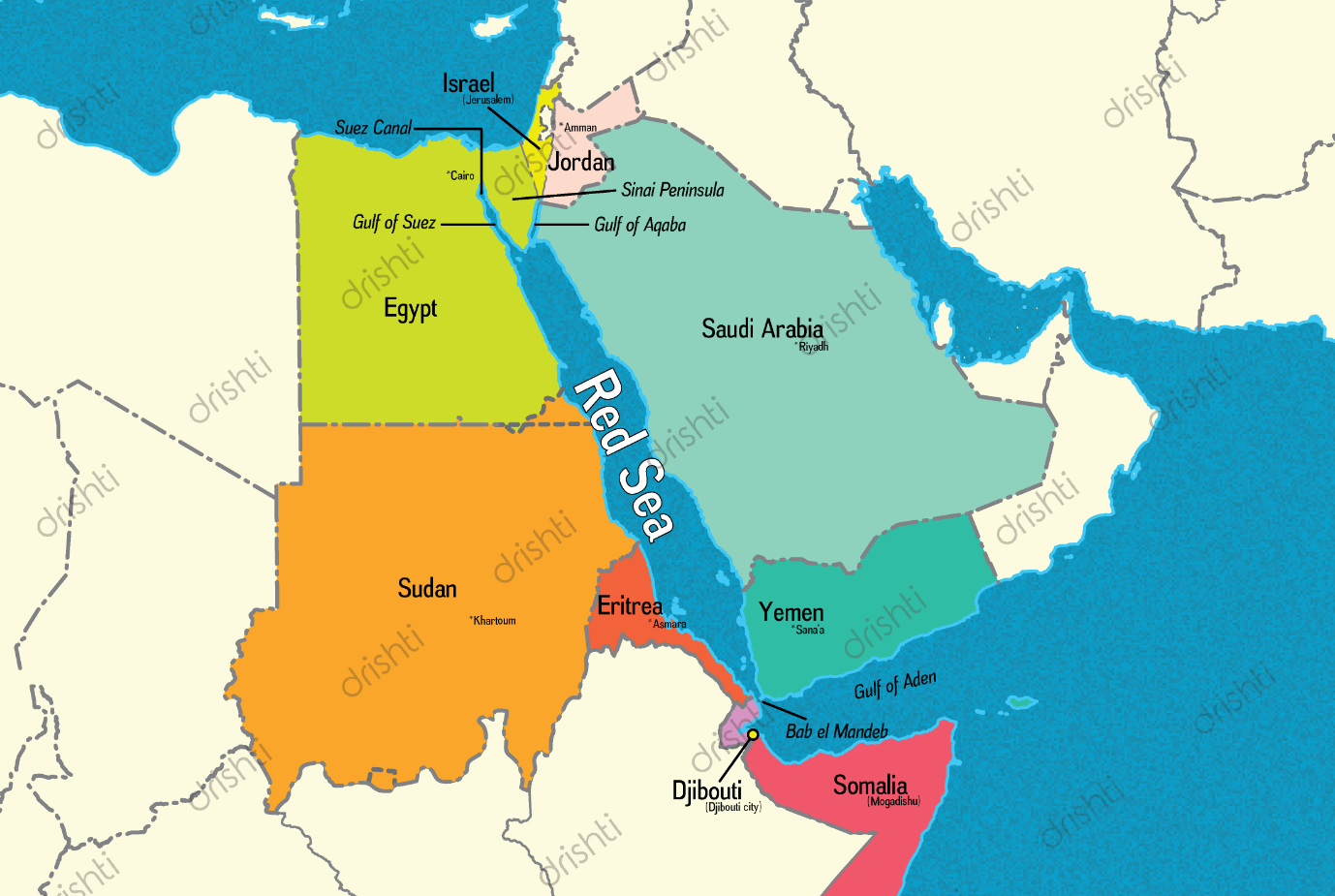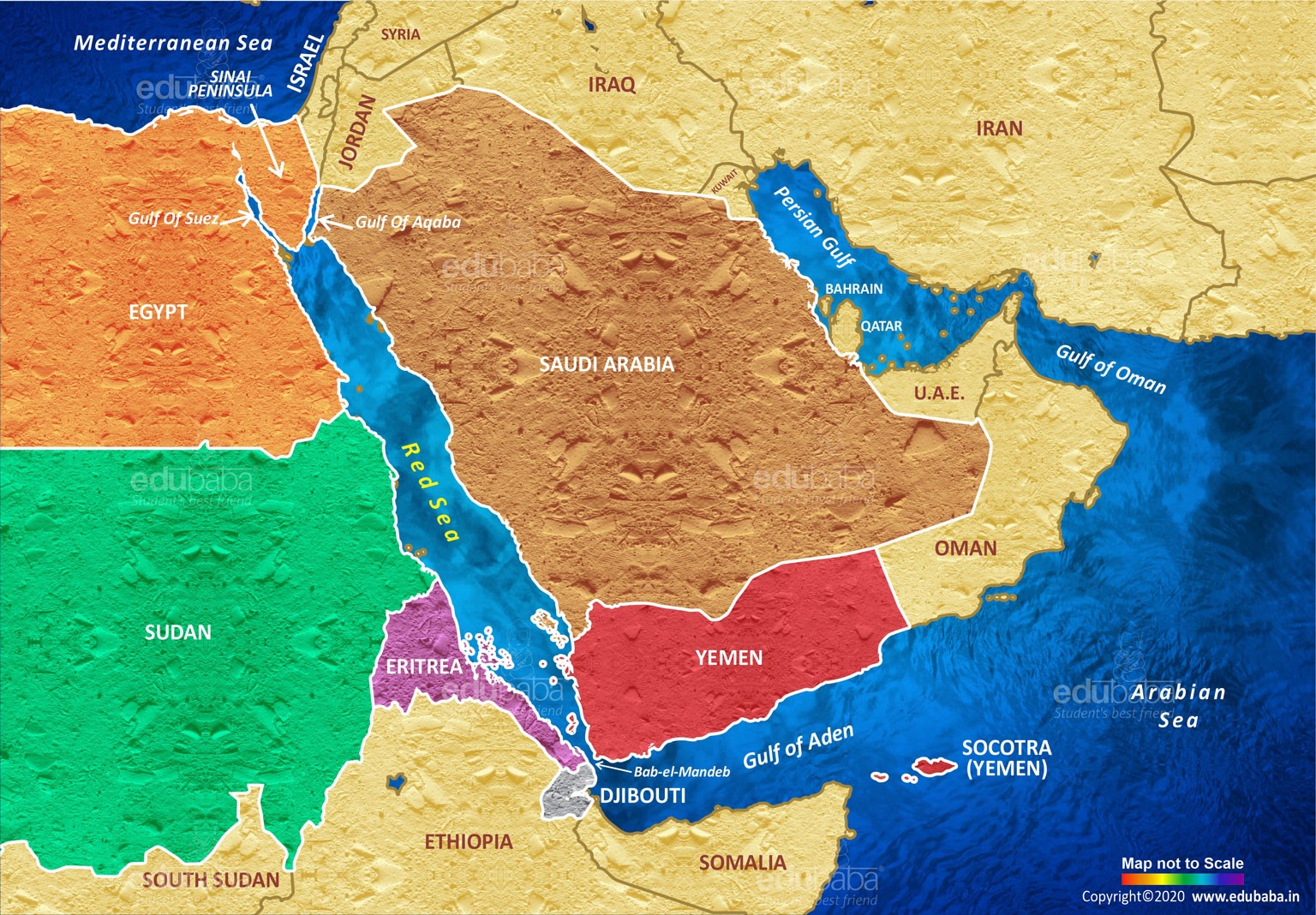





Disclaimer: Copyright infringement not intended.
Context
About the Red Sea

Why Red Sea is Red?
Physical Characteristics
Salinity
Biodiversity:
Economic factors
Climate
Significance of Red Sea
Project Ben Gurion Canal
|
PRACTICE QUESTION What is the significance of the Red Sea in the context of maritime geography and global trade routes? Discuss its strategic importance and the countries that border the Red Sea. |











© 2025 iasgyan. All right reserved